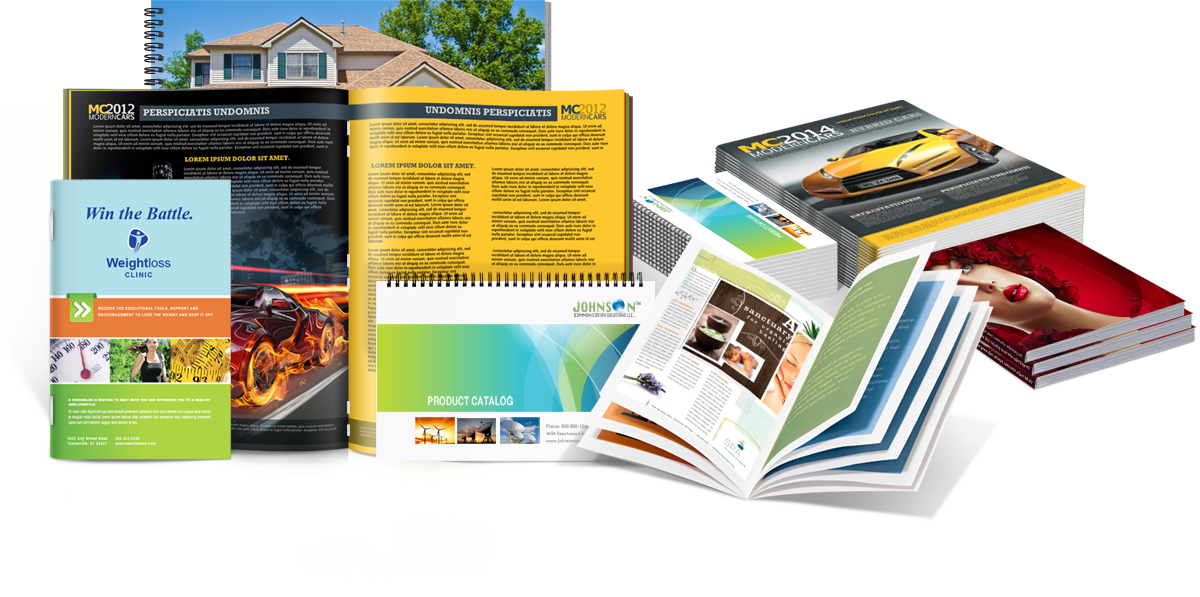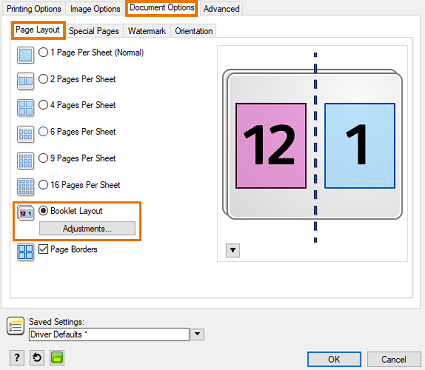7 Must-Know Tips for Affordable Booklet Printing Solutions
7 Must-Know Tips for Affordable Booklet Printing Solutions
Blog Article
The Crucial Overview to Understanding Booklet Printing Options and Techniques
The procedure of pamphlet printing includes numerous considerations that can significantly influence the last product. From selecting the ideal style and dimension to recognizing the subtleties of binding methods, each option plays a crucial role. In addition, elements such as paper stock and printing strategies additional influence the performance of the booklet. As one browses these choices, it becomes vital to understand how they adjoin and what that implies for the total outcome.
Understanding Booklet Sizes and layouts
When considering brochure printing, understanding the different styles and dimensions readily available is important for attaining the preferred discussion. Booklets can be created in various layouts, consisting of saddle-stitched, spiral-bound, and perfect-bound, each offering unique advantages. Usual sizes vary from conventional letter (8.5 x 11 inches) to smaller sized alternatives like A5 (5.8 x 8.3 inches), enabling flexibility based upon content and target audience.Selecting the suitable size can affect both the layout and visitor engagement. Larger sizes might fit aesthetically driven web content, while smaller sized styles may be a lot more portable and straightforward. In addition, the number of web pages affects the selection of binding method, as thicker pamphlets might need stronger bindings. Inevitably, recognizing these aspects permits a more customized approach, guaranteeing that the end product lines up with the designated message and visual, improving the total effectiveness of the interaction.
Selecting the Right Paper Stock

Binding Approaches: Choices and Factors To Consider
When it concerns binding techniques for pamphlets, numerous options are readily available, each with distinct benefits. Saddle stitch binding offers an economical solution for thinner brochures, while ideal binding techniques provide a more sleek seek thicker publications. Wire-O binding attracts attention for its toughness and ease of use, making it perfect for documents that call for flexibility.
Saddle Stitch Binding
Saddle stitch binding supplies a cost-efficient and useful solution for assembling booklets, making it a prominent selection among authors and organizations. This binding method entails folding sheets of paper in fifty percent and stapling them along the fold line, creating a cool and organized appearance. Normally ideal for brochures with a reduced page count, saddle stitching is optimal for magazines, pamphlets, and instructional products. The simpleness of this technique enables quick manufacturing and is frequently preferred for advertising things or short runs. It is crucial to note that saddle stitch binding may not be appropriate for thicker booklets, as the spinal column might not hold up under increased weight. In general, it stays a trusted option for lots of printing tasks.
Perfect Binding Techniques
Perfect binding is a widely used method that provides a professional and sleek finish to pamphlets and magazines. This technique entails gluing the pages with each other at the back using a strong adhesive, enabling a tidy side and the ability to hold a bigger number of pages compared to saddle sewing. Perfect binding is specifically ideal for thicker brochures, such as brochures and annual reports, where a tough, flat back is preferred. Additionally, it offers the choice for a published cover that can be developed to boost visual allure. However, factors to consider such as web page matter, paper weight, and the intended usage of the booklet must be taken into account, as they can impact sturdiness and general top quality.
Wire-O Binding Alternatives
Wire-O binding, known for its durability and adaptability, uses an exceptional option for brochures that require very easy web page transforming and an expert appearance. This binding method uses a series of steel loops that hold pages securely, permitting them to exist flat when open. It is especially suitable for manuals, catalogs, and discussions due to its durable nature. Wire-O binding is offered in numerous shades and his comment is here diameters, suiting different web page matters and thicknesses. In addition, it allows the addition of tabs and covers, enhancing the booklet's general aesthetic. Factors to consider for Wire-O binding include the choice of wire shade, the dimension of the loopholes, and the level of customization desired, all of which can profoundly affect the end product's look and functionality.
Digital vs. Offset Printing: Which Is Best for You?
When selecting a printing technique for pamphlets, understanding the distinctions between digital and counter printing is necessary. Digital printing utilizes modern-day technology to create premium prints promptly and economically, making it perfect for brief runs or projects needing fast turnaround times. It permits customization, giving the capability to publish on-demand with very little waste.In contrast, offset printing is a standard method that masters producing huge quantities with consistent quality. It includes transferring ink from a plate to a rubber blanket, after that to the paper, which results in precise details and dynamic colors. Balance out printing commonly calls for longer setup times and is a lot more cost-effective for larger volumes.Ultimately, the option between digital and counter printing depends on project demands, budget plan, and preferred amount. For little, time-sensitive jobs, electronic could be the most effective option, while countered may be more suitable for bigger, high-grade manufacturings.

Designing Your Pamphlet: Tips and Ideal Practices
When making a brochure, careful focus to format, font style selection, and color use can significantly boost its efficiency. A well-structured format guides the viewers's eye, while ideal typefaces assure readability and convey the preferred tone. Additionally, reliable use of shade can evoke emotions and highlight key details, making the total layout more impactful.
Selecting the Right Design
Exactly how can one successfully choose the ideal design for a pamphlet? It is essential to examine the brochure's function and target audience. A clean, arranged layout boosts readability and involvement. Utilizing a grid system can aid in straightening aspects constantly, developing a professional appearance. In addition, integrating visual pecking order through varying dimensions and placements of photos and text can lead the viewers's eye and emphasize crucial info. It is additionally crucial to leave sufficient white room, which protects against overcrowding and permits far better focus. Examining various formats through mock-ups can give understanding right into how the style carries out in real-world circumstances, making certain that the last product fulfills both visual and useful requirements.
Choosing Appropriate Font Styles
A well-chosen font can significantly boost the overall design of a booklet, matching the design and strengthening the material's message. The option of typefaces ought to consider readability, particularly for body text, as it guarantees the details is obtainable to all viewers. Sans-serif fonts are frequently favored for digital styles, while serif font styles can lend a conventional feel in printed materials. It's suggested to restrict font options to two or 3 to preserve aesthetic coherence. Furthermore, typeface size plays an essential role; headings must be not frustrating however distinctive, while body message should fit for reading. When selecting typefaces, placement with the brochure's theme and target audience is crucial for effective communication and aesthetic appeal.
Effective Usage of Color
Color functions as a powerful tool in brochure layout, shaping assumptions and assisting viewers emotions. It can stimulate feelings of peace, count on, or excitement, depending on the colors chosen. Developers need to think about shade theory concepts, making sure that the chosen scheme aligns with the brochure's message and target audience. As an example, making use of cozy shades like red and orange can create seriousness, while cooler tones like blue and environment-friendly foster tranquility.Additionally, contrast plays a crucial role; complementary colors can improve readability and aesthetic charm. Uniformity in shade usage throughout pages even more enhances brand identification and communication. Inevitably, efficient shade implementation not only captures attention yet likewise strengthens the pamphlet's objective, making it an important facet of successful design.
Finishing Touches: Coatings and Unique Results
While numerous take into consideration the web content and design of a pamphlet the most vital components, the ending up touches, such as finishes and unique effects, play a crucial duty in improving its overall appeal. Coatings can supply security and sturdiness, making sure that the pamphlet withstands wear and tear. Matte coatings supply an innovative, non-reflective surface area, while glossy coatings can make shades appear more vivid and captivating. Special impacts, like embossing or aluminum foil marking, include a responsive measurement that can develop a memorable impression. These strategies can highlight details locations, accentuating vital information or developing visual passion. Additionally, UV coating can supply a high-shine finish that boosts the general look.Together, these ending up touches not only improve the booklet's visual but likewise communicate expertise and focus to information, inevitably leaving a long-term influence on the reader.
Expense Considerations for Pamphlet Printing
Understanding the various expense considerations for brochure printing is important for companies and organizations aiming to maximize their budgets. Trick factors influencing prices consist of the selection of paper, binding, and ink techniques. Better materials, such as premium paper or specialized inks, usually enhance the general cost. Furthermore, the dimension and page count of the booklet play a substantial role; larger brochures need more sources and time to produce.Another important factor to consider is the printing method, whether digital or offset, as each has its very own pricing structure and viability for different quantities. Organizations ought to additionally consider style costs, which can vary based upon intricacy and making use of expert services. Ultimately, delivery and handling additional hints fees can contribute to the total amount, especially for big orders. By evaluating these aspects, companies can make enlightened choices that align with their economic capabilities while achieving the preferred top quality in their published materials.
Regularly Asked Questions
What Are the Ecological Influences of Pamphlet Printing?
The environmental influences of brochure printing consist of logging from paper production, carbon emissions from transport, and waste generation from discarded products - Booklet Printing. important source Sustainable methods, such as making use of recycled paper and environment-friendly inks, can minimize these impacts
How Can I Make Certain Color Accuracy in My Brochure?
To ensure color accuracy in a pamphlet, one should utilize adjusted displays, employ expert shade accounts, carry out examination prints, and pick high-quality printing services that supply shade matching and proofing choices for finest results.
What Is the Common Turnaround Time for Brochure Printing?
The common turnaround time for brochure printing varies relying on the complexity and quantity - Booklet Printing. Typically, it ranges from a few days to 2 weeks, influenced by variables such as printing techniques and ending up requirements
Exist Minimum Order Quantities for Brochure Printing?

Can I Print Booklets in Multiple Languages?
Publishing brochures in several languages is possible. Several printing solutions supply choices for multilingual or multilingual designs, enabling efficient interaction. Mindful preparation assurances that develop components fit different languages without compromising readability or visual appeals. Additionally, aspects such as paper supply and printing techniques further affect the effectiveness of the brochure. When considering booklet printing, recognizing the different layouts and sizes readily available is important for attaining the preferred discussion. When choosing a printing approach for pamphlets, understanding the differences in between electronic and offset printing is necessary. Furthermore, the dimension and page matter of the brochure play a substantial role; bigger pamphlets require more resources and time to produce.Another important consideration is the printing technique, whether digital or balanced out, as each has its own prices structure and viability for different quantities. The environmental effects of pamphlet printing include logging from paper manufacturing, carbon exhausts from transport, and waste generation from disposed of materials.
Report this page